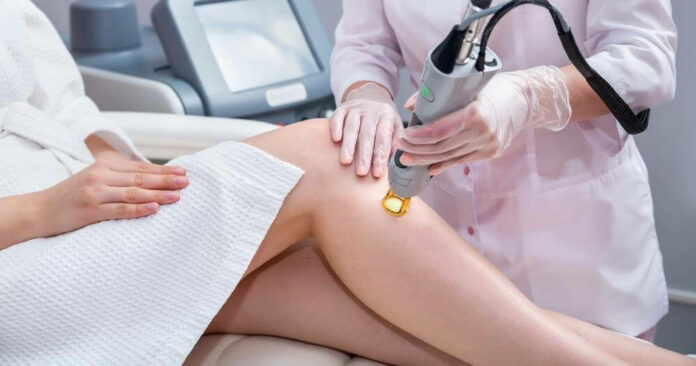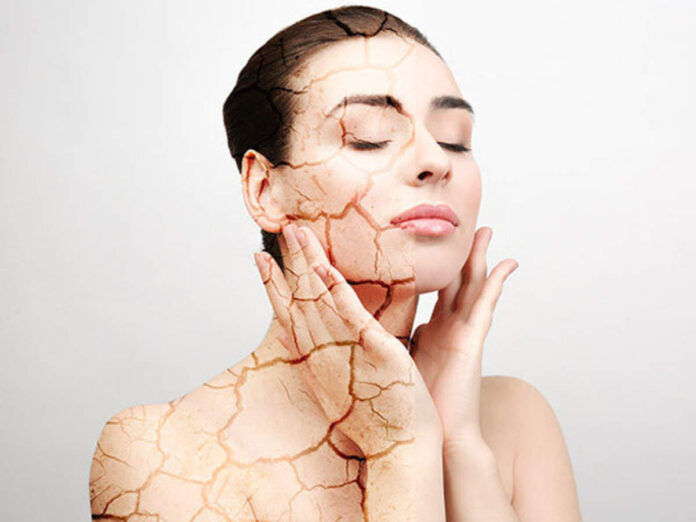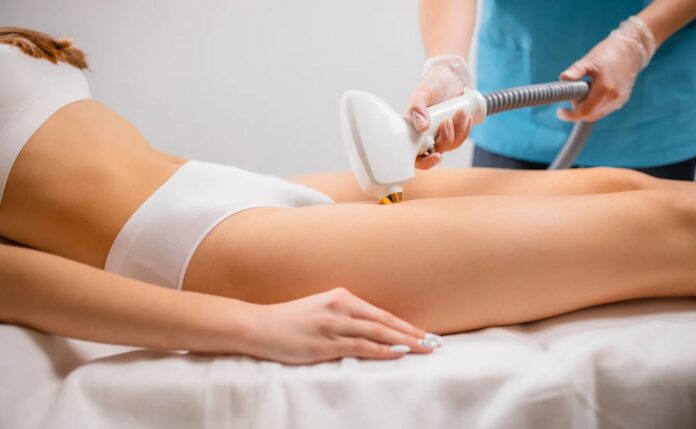Hirsutism is probably not a topic you discuss with your friends over a bottle of champagne. Yet, chances are, you’ve come across multiple women with the condition. Facial hair in rather musculine areas… sounds familiar? Well, that’s hirsutism at play. It’s atypical but not uncommon. In this article, we’ll be discussing hirsutism over a glass of virtual champagne. Cheers!
What Is Hirsutism?
Hirsutism is a medical condition experienced in women in which hairs are found growing in areas typical of men. This usually includes the growth of coarse hair in places like the face, chest, and back, especially in dark patches, similar to what is seen in a mustache. The condition is sometimes referred to as excessive hairiness in women.
Can Hirsutism Be Cured or Managed?
Yes. Hirsutism can be managed and there are various treatment options. However, to make an informed decision, you must first identify the root cause of the condition and understand its risk factors.
Risk Factors for Hirsutism
Certain factors may increase one’s risk of developing hirsutism. These factors include:
Obesity

Obesity is a risk factor for hirsutism. While obesity itself may not cause hirsutism, studies show that overweight and obese women are more likely to experience hirsutism due to increased androgen levels and insulin resistance.
Ancestry
Genetic and racial factors may also influence the prevalence of hirsutism in women. Women of Middle Eastern, Asian, and Mediterranean ancestry generally have a higher likelihood of growing more body hair than other women.
Family History
Genes play a role in the body’s sensitivity to androgens, whose level is a key factor in hirsutism. As such, if a woman has family members, especially females, with a history of hirsutism, she may be at a greater risk of developing the condition, as it may be a sign of a genetic predisposition to the condition.
Signs and Symptoms
Identifying the signs and symptoms of hirsutism early is key to treating the condition effectively. Here are some telltale signs of hirsutism that may be observed in women:
Hair growth in rather masculine areas
The most common sign of hirsutism is the growth of hairs in atypical places in the woman’s body. Hair growth areas usually include the upper lip, chin, chest, back, and abdomen. Sometimes,though less common, hair growth may also be observed on the thighs and buttocks.
Increased hair coarseness
A key difference between naturally growing hair and hirsutism-related hair growth is that the latter results in notably thicker and darker hair growth in the affected body areas. Most women have fine, soft hair on their skin; hirsutism-related hair is, however, thicker and follows a male-pattern distribution on the body.
Acne and oily skin
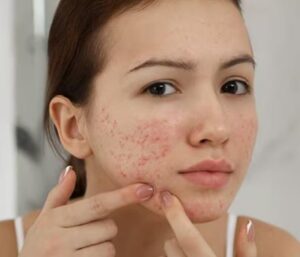
Sometimes, with hirsutism, come skin problems like acne and oiliness due to an imbalance in hormonal levels. These signs are often an indication of an underlying condition (e.g., polycystic ovary syndrome) aiding hirsutism.
Irregular menstrual cycles
Irregular periods are often caused by hormonal imbalances. Thus, since hirsutism can be associated with a hormonal disorder like PCOS, women with hirsutism may experience irregular periods or extended menstrual cycles.
Clitorial enlargement (clitomegaly)
Clitorial enlargement may be linked to underlying conditions like polycystic ovary syndrome (PCOS) and congenital adrenal hyperplasia. These conditions all contribute to hirsutism. So, women with hirsutism may also experience clitorial enlargement.
Voice changes
The voice may begin to deepen due to excess androgen levels accompanying hirsutism. However, voice deepening is not a telltale sign of hirsutism; it is often a result of hormonal imbalance.
Diagnosis
Diagnosing hirsutism usually involves a careful consideration of one’s medical history and menstrual cycle pattern. So, the doctor may ask a couple of questions to get a detailed history. Your doctor may try to find out when you started noticing the earliest signs when you hit puberty, or if you have a history of irregular menstrual cycles.
Where the menstrual cycle has been irregular, PCOS is considered the most likely cause of hirsutism. However, if one experiences an excess of hair growth without any irregularity in the menstrual cycle, it’s probably due to genetic or inherited factors.
The doctor may also run some tests to check the body’s hormonal levels. A pelvic examination may be done to check for tumor production and, thus, a hormonal imbalance and hirsutism. If further testing is needed, MRI scans of the brain, a CT scan of the adrenal glands, and an ultrasound of the ovaries may be done to determine the root cause.
Causes and Medical Conditions Associated with Hirsutism
Primarily, hirsutism occurs due to an excess level of male hormones in women. As such, hormonal-related diseases may cause hirsutism or increase an individual’s risk profile.
Polycystic Ovary Symptoms (PCOS)
PCOS is one of the leading causes of hirsutism in women. PCOS is a reproductive disorder characterized by hormonal imbalances, especially excess levels of androgens (male hormones). This imbalance affects ovulation causing a disruption of the menstrual cycle.
High androgen levels in the body often cause excess growth of coarse hair in women in an atypical pattern (hirsutism). Research also shows that hirsutism is the main sign of hyperandrogenism in women with PCOS.
PCOS may run in families and increase the risk of diseases like type 2 diabetes, metabolic syndrome, sleep apnea, fertility issues, and certain cardiovascular diseases.
Idiopathic Hirsutism
Sometimes signs of hirsutism may be noticed without an apparent cause or underlying issue. This is described as idiopathic hirsutism. In this case, a subtle hair growth pattern similar to that found in males may be observed, however, with no disruption in normal bodily functions.
Cushing’s syndrome
This condition is characterized by an excessive production of cortisol, the stress hormone, in the body. Excess cortisol may then affect the body’s hormonal balance, causing hirsutism to develop.
Congenital Adrenal Hyperplasia (CAH)
CAHs are congenital disorders that affect the adrenal glands, the small glands above the kidney, thus affecting some normal body functions. Congenital adrenal hyperplasia usually causes a deficiency of the enzymes required to produce the stress hormone cortisol and an imbalance in the production of aldosterone, needed for blood pressure regulation and electrolyte balance. CAH is often caused by 21-hydroxylase deficiency, a deficiency that results in the overproduction of androgens (male sex hormones), thus contributing to hirsutism.
Thyroid problems
The thyroid interacts with various hormones in the body and is a vital organ for regulating reproductive hormones. Since, hirsutism usually results from excess androgen levels, condition that affects thyroid function may trigger hirsutism. As such, doctors usually assess the thyroid health when diagnosing women with hirsutism. After all, accurate diagnosis is the first step in finding a lasting solution.
Tumors
Tumors may occur in various parts of the body, causing discomfort. However, those that affect the endocrine system, especially the adrenal glands and ovaries, may be linked to hirsutism. How? Tumors may secret unwanted androgens or hinder the production of some vital body hormones. This disrupts the natural hormonal balance of the body and may predispose it to hirsutism and other conditions.
Androgenic Medications
These are pills that boost the secretion of androgens. Some anabolic steroids and certain birth control pills fall into this category. These drugs may increase androgen levels in the body, causing hirsutism to develop.
Effects of Hirsutism
Aside from the obvious physical signs of hirsutism, the condition doesn’t affect your physical health. However, it may cause emotional distress and feelings of insecurity in women. Hirsutism causes body image concerns and social anxiety in many women. The good news, though, is that this doesn’t have to be the case. With guidance, hirsutism can be managed effectively.
Treatment Options
The treatment option adopted for hirsutism may vary depending on its root cause. However, generally, once the cause of hirsutism is identified, three treatment approaches are employed in managing the condition. The most effective hirsutism control strategy usually combines two or more approaches.
Natural

The natural treatment approach focuses on lifestyle changes and is often the easiest measure to put in place by the individual herself. Often, natural hirsutism control measures do not undo the existing signs of hirsutism; however, they may prevent the condition from getting worse and avoid predisposing the individual to other related diseases. Natural approaches to treating hirsutism include:
- Dietary Adjustments
Some dietary choices may aid in regulating hormone secretion in the body, preventing hirsutism from becoming chronic.
- Add in fiber-rich foods.
While fiber doesn’t work like magic to control hirsutism, it may help your body manage insulin resistance. Consuming meals rich in fiber may also help one manage the long-term implications of PCOS. Moreso, studies recommend the consumption of a high-fiber diet in women by obese or overweight women with hirsutism and polycystic ovary to treat the disorder.
- Consider using supplements.
Magnesium and vitamin supplementation are quite helpful in treating hirsutism. A 2018 study found that magnesium and vitamin E co-supplementation resulted in a significant reduction in hirsutism among women with hirsutism between the ages of 18 and 40. Dietary supplements like inositol and onega-3 fatty acids are also believed to aid hormonal balance, thus helping in managing hirsutism.
- Lifestyle modifications
Making lifestyle adjustments may also play a key role in the management of hirsutism.
- Weight management
Losing weight, especially for women with PCOS, may greatly improve reproductive health and reduce hirsutism symptoms and complications. It also lowers the risk of certain cardiovascular diseases associated with the condition, reducing a woman’s overall health risk. However, getting to a healthy weight does not directly impact hair growth.
- Maintain physical activity
Staying physically active does not only aid in weight management but may also help the body with insulin and hormone regulation. This mitigates hirsutism, preventing the worsening of the condition, and may also boost one’s mood and self-esteem.
- Herbal remedies
Anecdotal evidence suggests that certain herbal remedies, such as saw palmetto and spearmint tea, have anti-androgenic properties and may be helpful in reducing the growth of excessive hair. Simply put, these herbal remedies are believed to reduce the levels of androgens (the male hormones responsible for hirsutism) in the body. Further research is, however, required to ascertain these claims.
Medical
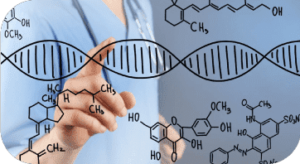
As with diagnosing and giving prescriptions for other conditions, prescription drugs may also be given for the treatment of hirsutism. Medical help should be sought in chronic cases of hirsutism.
- Use of anti-androgen
These describe medications that inhibit the actions of androgens on hair follicles. They are usually prescribed for the treatment of hirsutism and are usually very helpful in reducing unwanted hair growth. Common examples of anti-androgens are spironolactone (Aldactone, CaroSpir) and finasteride.
- Oral contraceptives
Some birth control pills contain progestin and estrogen. This may be a great treatment solution for excess androgens in women experiencing hirsutism who don’t want to get pregnant.
- Topical cream application
A topical cream like Eflornithine (Vaniqa) is often prescribed to slow down hirsutism-related hair growth. The cream should be applied directly to the face and other areas of unwanted hair growth. This medication, coupled with laser therapy, is a great, lasting solution to getting rid of hirsutism-related hair.
Cosmetic

Cosmetic approaches focus on removing unwanted hair and ensuring skin health and glow. Cosmetic solutions usually do not address the underlying issue (hormonal imbalance) but are very effective in offering relief and often a boost to self-image.
- Shaving
Shaving is a quick, cost-effective way to get rid of unwanted hair on the face, chin, chest, back, etc. Shaving is often the go-to cosmetic remedy for many women, as it doesn’t require booking an appointment with a professional and can be done in the comfort of one’s home. The downside to shaving, however, is that it does not eliminate the hair growth at the root.
- Waxing
Some women turn to waxing for a cleaner hair removal result, as waxing removes hair closer to the roots. The problem with this method is that it’s rather painful and may be uncomfortable.
- Laser hair removal
If you want a nearly painless, long-term hair removal solution, give lasers a try. The method uses concentrated laser energy to target and remove hair, destroying it from its roots. Laser hair removal usually needs to be done by a professional. However, IPL devices give you the liberty to do it privately and in comfort.
- Depilatory cream
Depilatory creams are a nearly painless hair removal solution. These creams basically break down surface hair, leaving the skin hairless. However, depilatory creams are not all good. Depending on the thickness of the hair, the cream may be less effective in hair removal, and some creams may cause irritation of the skin.
Seeking professional help
Although there are various self-care approaches to treating hirsutism signs, it is best to approach your doctor if you notice signs of hirsutism. Remember, hirsutism may be caused by a range of factors. By seeking professional help, the underlying cause can be identified and addressed in time to prevent possible long-term complications and risks.
Frequently Asked Questions about Hirsutism
Does hirsutism always mean PCOS?
No. PCOS is a prevalent cause of hirsutism; however, it is not the only cause. Various conditions may bring about hirsutism in women.
Is hirsutism treatable?
Yes. Hirsutism can be treated using medical, cosmetic, or natural approaches. A combination of two or more of the approaches has been proven to be effective. However, ensure that you consult your doctor before you begin treating hirsutism.
Is hirsutism a lifetime condition?
The lifespan of hirsutism may vary depending on its cause. For example, while hirsutism due to the use of androgenic medications may be addressed by discontinuing the medication, hirsutism due to PCOS may require long-term treatment.
Does hirsutism go away on its own?
Hirsutism usually doesn’t disappear just because it’s left untreated. However, there are effective treatment and management options for the condition.
What is the best medication for hirsutism?
There are various anti-androgen pills; however, the best medication for hirsutism will vary from woman to woman depending on the root cause of the condition.
Can hirsutism be noticed and managed during pregnancy?
Yes. However, note that pregnancy itself influences your hormone levels and sometimes hair growth. So, it’s best to speak to your doctor before you attempt hirsutism treatments during pregnancy.
Final Thoughts
Hirsutism is not discussed across tables like the weather is. However, it is more common than you think. If you’re a woman experiencing hirsutism, know that you’re not alone and that there are various treatment options available for you. Stay positive through the process and walk with your head held high. Hirsutism doesn’t make you any less feminine. Your solution is merely a professional consultation and laser treatment away.

 By Mariela
By Mariela
 Updated: May 13, 2024
Updated: May 13, 2024
 10 minutes
10 minutes













